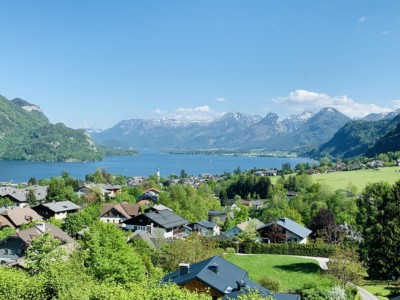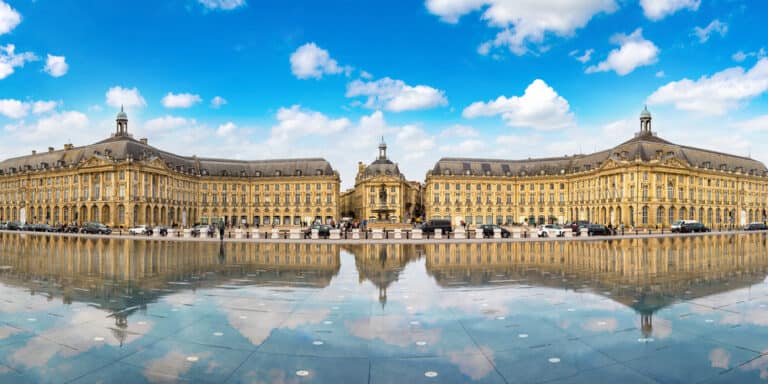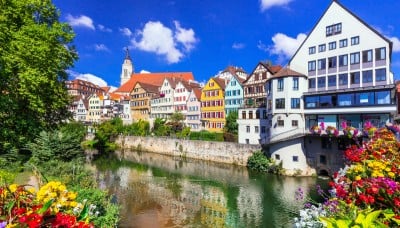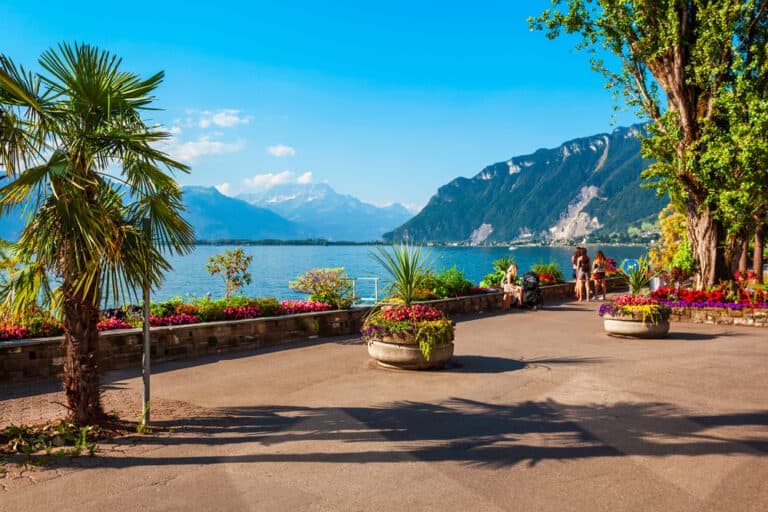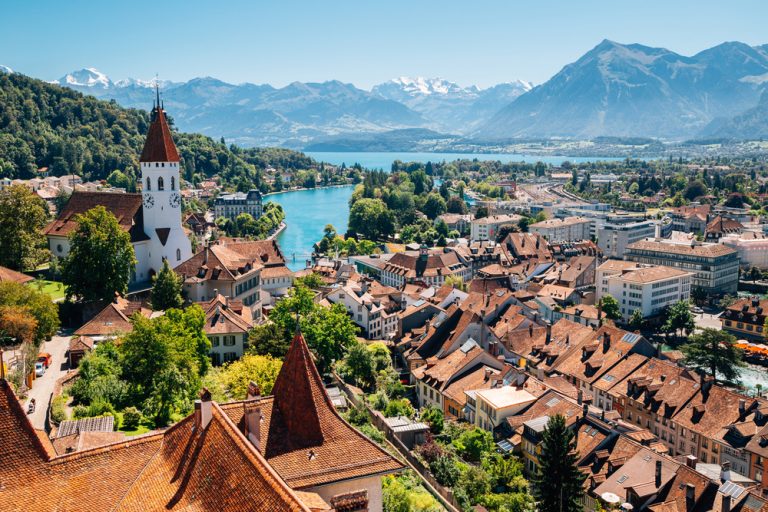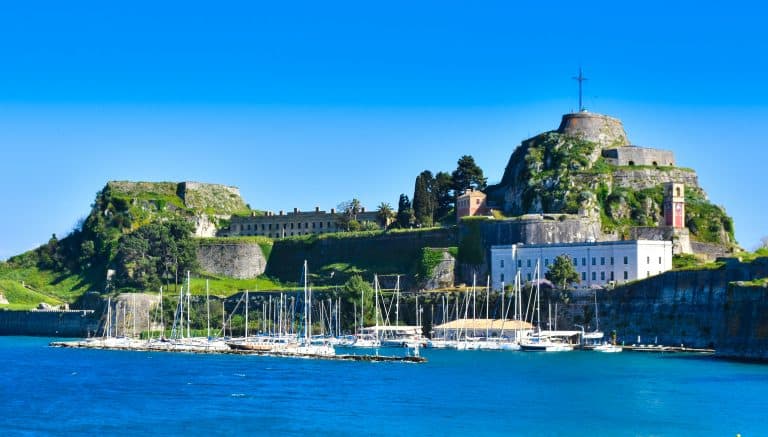One day in Brussels: the top things to put on your itinerary (2023)
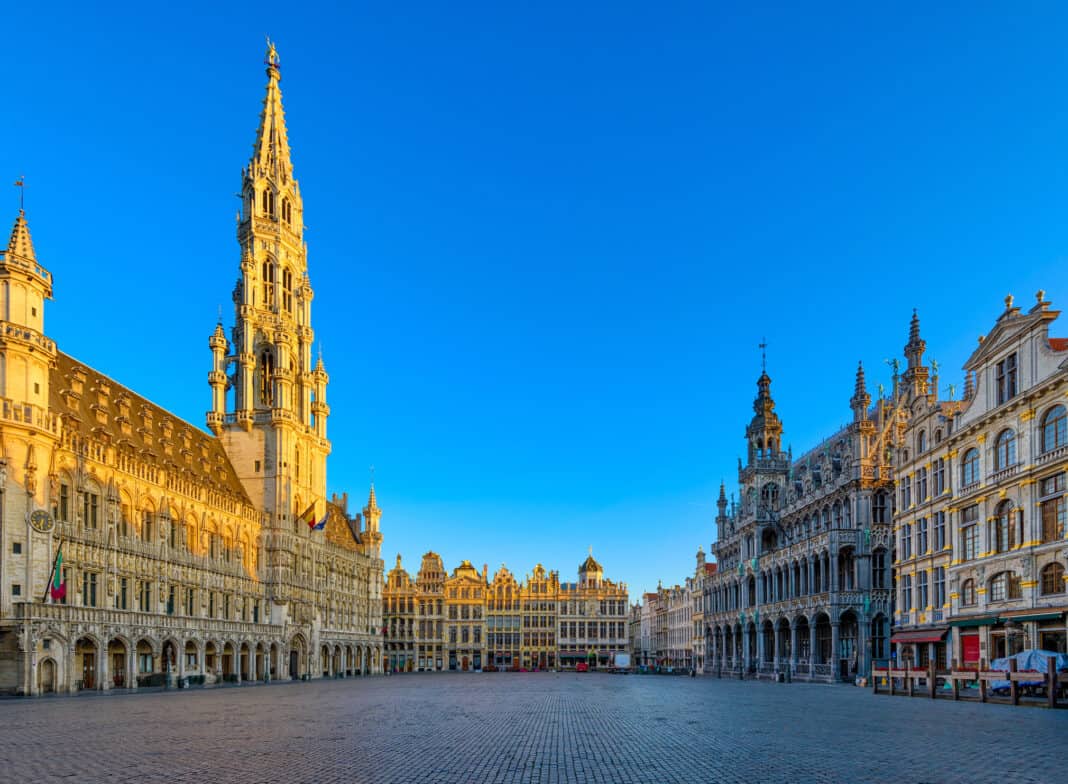
Brussels, the capital of Belgium, is a fabulous place for a day trip or a short break and is one of the top European destinations to visit. It’s a beautiful city, with an elegant central square, fascinating historic sites and landmarks, a grand palace, leafy parks, and an excellent choice of museums.
If you’re wondering whether it’s possible to see the main sights in just one day in Brussels, then this post will help you (the answer is yes!).
It outlines the top things to do during your trip and how best to see them in a short amount of time. I’ve also included information on how to get to Brussels and the best time to visit.
Below is your guide to the best things to do with one day in Brussels. And if you can’t do everything you want to on your day out, maybe consider visiting for longer!
This post contains affiliate links
How to get around Brussels
Depending on how you arrive in the city, you’re likely to end up around the Gare du Midi (Brussels South train station), the Gare de Bruxelles-Central (Brussels Central train station) or the Bourse metro station (named after the old stock exchange).
All of these are near to, or not far from, the Lower Town, right where the action is and where many of Brussels’ main tourist attractions can be found. Most notably, the Grand-Place is here, the city’s magnificent central square.
The hop-on hop-off bus
Being short on time, one of the best ways to get around is on the Hop-on Hop-off bus.
You can see the popular central tourist attractions and then go out to those slightly further out, such as the Atomium (the famous molecule-shaped structure with its giant metal spheres).
The Brussels Card
If you are on a day trip, consider purchasing a 24-hour Brussels card, as this gives you free admission to 49 museums.
The card is really handy as the city has a wealth of fascinating – and in some cases quite quirky – museums to explore, covering subjects as diverse as art and chocolate, to comic strips and science. You also get discounts in selected restaurants and some of the city’s famous chocolate shops.
If you’re staying in the city for longer, you can purchase a card for 48 hours or 72 hours.
And for a small extra fee, the card also gives you access to the city’s public transportation system – that’s buses, the metro, trains, and trams.
Guided tours
You can also book a guided tour that will take you around the main sights in the city. These have the benefit of a local guide who will tell you all about the history of the city and the historical background of the main sights.
These tours are of varying durations, but all take you to the main sights in the centre of the city.
The best time to visit Brussels
The best time to visit Brussels is between March and October when the weather is likely to be fairly decent. The hottest months are between June and August when temperatures can climb into the low 20s in centigrade.
If you avoid the peak summer months of June to August and want to extend your day trip into a mini-break, accommodation is likely more affordable.
In terms of festivals, there is something to see and do all year round, including a summer music festival, a Jazz festival in May, and even an annual chocolate festival in February!
Christmas is particularly atmospheric with a large tree in the city centre in the Grand-Place. There are also Christmas markets to get you in the festive spirit and where you can buy some souvenirs to take home.
What to do with one day in Brussels
There’s plenty to do with one day in Brussels. Fortunately, the centre is relatively compact and you can easily walk to many of the main attractions, particularly in the Lower Town.
However, as time will be of the essence, I’ve organised the list of top things to see and do by area. With just one day in Brussels, you will want to maximise your time, focus on the main sights, and pack as many in as possible.
The central Lower Town
Many of the city’s main attractions are in the Lower Town. Here are the main things you should do here.
See the elegant Grand Place (Grote Markt) with the Hotel de Ville and La Maison du Roi
The city’s main focal point is the elegant Grand Place (Grand Square). With its beautiful buildings, this UNESCO World Heritage site is a must-see on your day trip to Brussels.

The expansive and pedestrianised central square is the beating heart of Brussels and is dominated by the commanding Town Hall (Hotel de Ville).
The Hotel de Ville
Brussels’ Hotel de Ville is a Gothic masterpiece built in the middle of the 15th century. It is topped off with a stunning tower standing nearly 100 metres high.
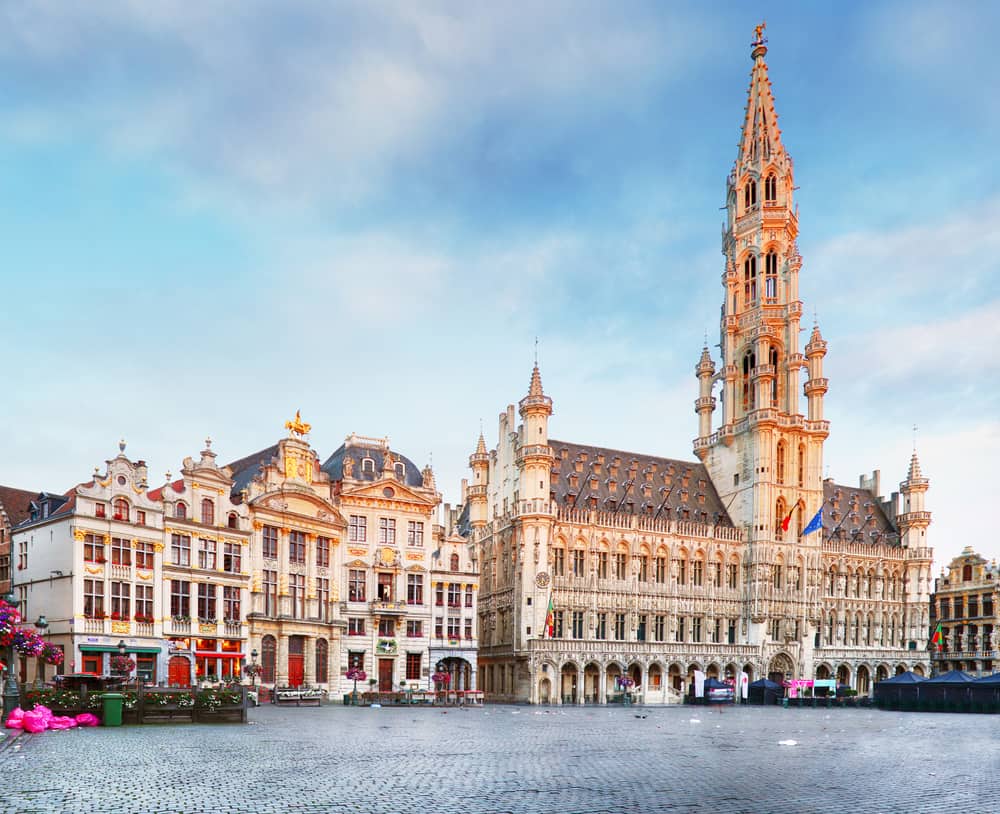
Although you can’t climb the tower, you can go on guided tours of the Town Hall’s rooms if you’re visiting on a Wednesday or Sunday (note tickets need to be purchased in advance). The highlight is apparently is the Council Chamber.
La Maison du Roi
Directly opposite the Town Hall is another architectural landmark – the beautiful La Maison du Roi (the King’s House). This is home to the Musee de la Ville de Bruxelles (the Brussels City Museum).

The impressive building houses a diverse range of exhibits, including documents, models, paintings, and photographs that span the city’s history. There are some noteworthy paintings on display too.
One of the main attractions, however, is the original of the famous bronze Manneken Pis statue, another Brussels landmark located about a five-minute walk south from the Grand-Place.
Aside from these two stunning buildings, the Grand-Place is surrounded by beautifully decorated Baroque guildhalls. These collectively contribute to creating one of the most impressive squares you will find on your travels, hence its justified UNESCO World Heritage status.
One of these houses the Belgian Brewers Museum (Musee des Brasseurs Belges) if you fancy finding out more about traditional brewing techniques and taking part in some tastings.
After you’ve wandered around the Grand-Place, it is worth exploring the surrounding areas, which all have sights worth seeing. Just to the north, you’ll find one of the Lower Town’s most happening spots, Ilot Sacre.
Wander around the Ilot Sacre neighbourhood
Ilot Sacre is full of character, as you’ll discover as you explore the neighbourhood’s charming maze of medieval streets.
Rue des Bouchers
Rue des Bouchers, its main artery, is lined with restaurants but often gets a bad rap for being something of a tourist trap. However, if you are just coming to marvel at the medieval architecture, it’s definitely worth a visit.
It is particularly atmospheric when dusk falls, and the neon lights fill the streets with colour.
The Galeries Royales St-Hubert
Close by you’ll find the Galeries Royales Saint-Hubert (Royal Gallery of Saint Hubert), an eye-catching collection of three 19th-century glass-covered arcades – reportedly one of Europe’s oldest shopping arcades.
Housed inside, is a diverse selection of shopping attractions, including cafes, jewellery outlets, luxury boutiques, restaurants, speciality shops, and entertainment venues.
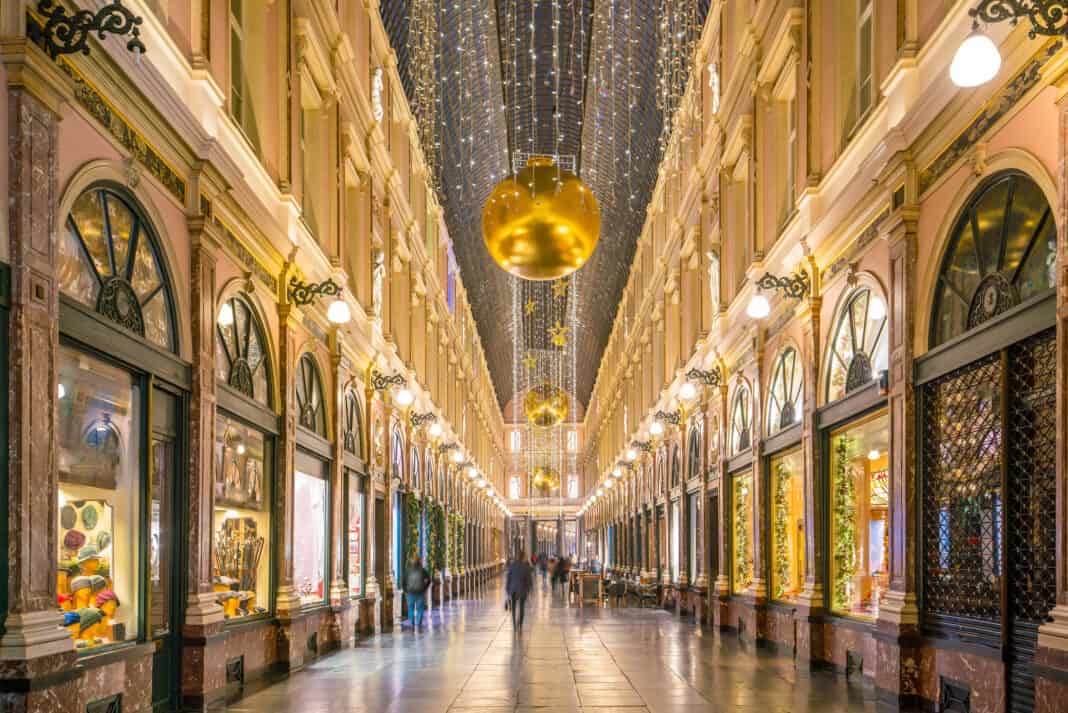
The Royal Theatre Toone
In the same neighbourhood, is ‘the Toone,’ a traditional Brussels puppet theatre with a café. Brussels once had many of these puppet theatres, but this is the only remaining one.
If you’re looking for somewhere unique, this is one for the list.
See the city’s famous statues
Like Copenhagen’s Little Mermaid, Brussels has its own curiosity – the Manneken Pis, a small bronze statue of a boy whose act of urination creates a fountain. It was designed by Jérôme Duquesnoy the Elder.
Head south from the Grand-Place and walk into rue de L’Etuve where you’ll find the remarkably small figure standing on a pedestal to your left.
It is one of Brussels’ top attractions, so just look out for the lively crowds snapping photos of this little boy.

On certain days, the Manneken-Pis is clothed in different costumes. You can visit a small museum nearby called Garderobe Mannekin Pis and see around 140 different types of costumes used to dress him.
For those who are interested, you will find the more modern female equivalent of the statue, the Jeanneke Pis, in the Ilot Sacre neighbourhood. I’ll leave what’s going on with this statue to your imagination!
Learn about the history of cocoa
You will only need to spend a little bit of time at the Manneken-Pis, so you could also stop off at the nearby Choco-Story Brussels.
This small museum is a must for anyone with a sweet tooth. Inside you will learn about the history of cocoa and its arrival in Europe and see demonstrations of chocolate making. There is also an opportunity to taste pralines prepared by a master chocolate maker.
Explore St-Gery and St-Catherine
Both these areas are a short walking distance from the Grand-Place.
St-Gery is located literally on the other side of the broad boulevard Anspach from Brussels’ old Stock Exchange (Bourse) and has become a popular nightlife spot.
However, it is also a lively place during the day, packed full of bars, cafes, and restaurants.
The main focal point is the square the neighbourhood is named after. This is a great place to sit, relax, and people watch while you sip on a drink or grab something to eat.
Also check out the Halles St-Gery, Victorian-era covered market halls that are now used for exhibitions and events and have eateries.
Sainte Catherine sits next to St-Gery on the same side of boulevard Anspach and is another neighbourhood worth wandering around.
Notable for its bars, cafes, pubs, and restaurants dotted around the main square, highlights include the beautiful St Catherine’s Church, a local landmark.
When you wander around, it is hard to believe that Sainte Catherine was once filled with canals, which were later covered over. All that is left is Canal de Charleroi. A magnet for fish and seafood diners, Saint Catherine is particularly atmospheric in the summer months when people dine outside.

Sainte Catherine with its cathedral and outdoor eating
Sample some Belgian food
A trip to Brussels wouldn’t be complete without a meal of mussels cooked with onions and celery and served with French fries, one of Belgium’s national dishes.
However, other specialities include a beef stew made with Belgian beer (Carbonade flamande) that is similar to the French beef bourguignon, steak-frites (steak with fries), and boudin (blood sausage). You can try these dishes out in some of the aforementioned areas of the city.
For those with a sweet tooth, Brussels will be hard to resist, with its extensive Belgian waffle outlets and many shops selling the famous Belgian chocolate. You’ll find no shortage of chocolatiers in Brussels, and you can even do tastings and tours.
Belgium is also famous for its vast selection of highly original and unique beers, many of which are bottled and come with beautifully designed labels. Many bars and pubs have extensive menus covering the different specialities brewed across the country, so you can sample these on a trip to Brussels.
A word of warning though: the alcohol content is often very high, so be careful how much you consume.
If you’re a foodie and fancy sampling some traditional food while also seeing the sights, this tour combines a walking tour of the main central sights with some chocolate, beer and waffle tasting.
Other sights outside of the Lower Town
As you can see, there are plenty of sights in the central part of the city that will easily occupy you for a day.
However, as with every capital city, there are other areas to explore. Brussels is no exception: there’s loads of things to do beyond the Lower Town.
To see some of these, I’d recommend booking the hop-on hop-off bus which you can pick up near the Grand-Place.
The Hop-on Hop-off bus
This bus has two routes – a blue route and a red route – that you can take when you purchase a ticket. You can use your ticket on both routes. Brussels Central station is the first stop on the blue route and is also the interchange for the red route.
As well as dropping tourists off near the Grand-Place (Brussels Central station and Manneken-Pis stops), the blue route has 11 stops, taking visitors to many of the city’s top attractions.
Some of these are covered below in more detail in case you want to get off and explore them.
They include Saint-Michel and Saint-Gudula Cathedral, the Belgian Comic Strip Center (Comics Art Museum), the National Basilica of the Sacred Heart of Koekelberg, the Eglise Notre-Dame de Laeken, the Atomium, and the Magritte Museum.
The red route (with 12 stops) takes you near Mont des Arts for superb views over central Brussels.
Other sights on this route include the Royal Museums of Fine Arts of Belgium, the European Parliament, the museums scattered around the Place Royale, and the Parc du Cinquantenaire.
Although you’re unlikely to have enough time to see everything in just a day, you can then earmark other things of interest for your next visit and when you have extra time.
Below are some of the highlights of each route.
Blue route highlights
St Michael and St Gudula Cathedral
Saint-Michel and Saint-Gudula are the city’s patron saints. This fabulous medieval gothic style building, completed in the 16th century after hundreds of years of construction, is worth visiting if you are in Brussels.

Standing out front, you can’t help but be impressed by the cathedral’s striking façade and twin towers. Inside is equally amazing with its beautiful collection of stained glass windows.
The Comics Art Museum
Belgium’s comic heritage has earned international renown, with Tintin being one of the country’s best known exports. You can visit the Comics Art Museum housed in the Belgian Comic Strip Center and find out more about Belgium’s illustrious history of producing cartoons and comic strips.
The early 20th century building was the brainchild of architect Victor Horta, a leading light in the development of the art nouveau genre. It is beautifully designed.
If art nouveau interests you, a few other highlights of art nouveau architecture in Brussels can be found here). You can also book an art nouveau walking tour.
The exhibition in the Belgian Comic Strip Center features hundreds of original comic strip drawings, as well as original manuscripts and reconstructed sets.
The National Basilica of the Sacred Heart of Koekelberg
The National Basilica of the Sacred Heart of Koekelberg is a major landmark on Brussels’ skyline. It is a striking sight with its green dome and art deco style.
Apparently, it is the fifth largest church in the world, and although it was started in the early 1900s, it took nearly 70 years to complete.
Inside you can view an art collection, and there is an exhibit that traces the building’s history. The highlight, however, is the view from the observation deck. At a height of over 50 metres, there are stunning views over Brussels.
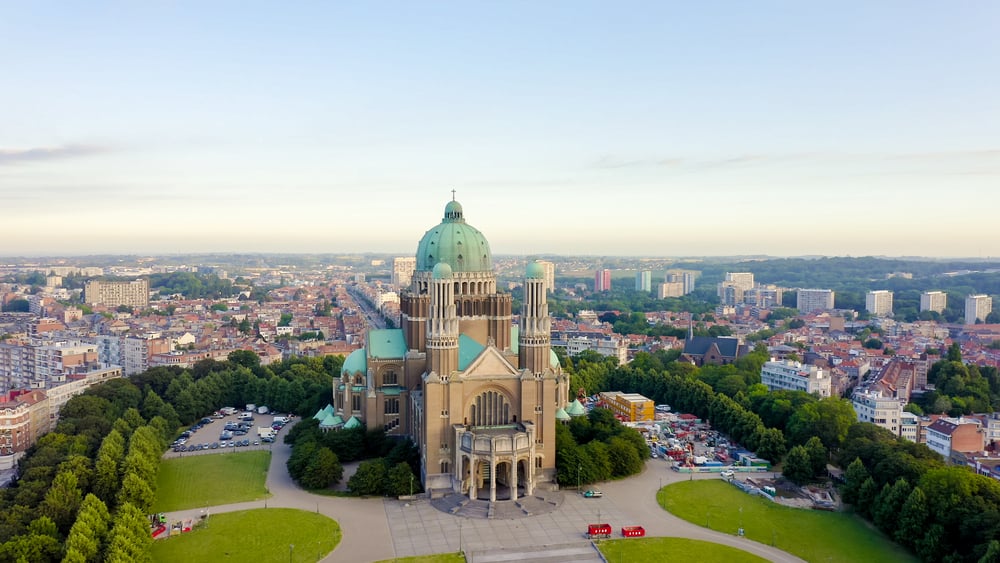
Eglise Notre-Dame de Laeken (Our Lady of Laeken Church)
Located in the Laeken district of the city, this neo-gothic church is significant for being where the Belgian Royal family are laid to rest.
The Royal Palace of Laeken is not far away and remains the residence of Belgian royalty.
The Atomium
This eye-catching architectural design underwent a major renovation in the mid-2000s and remains Brussels’s most popular tourist attraction.
Originally built for Expo 58, this molecule-shaped construction has an almost futuristic feel, especially when you step inside and explore the interior.
You can walk between different stainless-steel spheres via the connecting tubes inside which are housed escalators. More than half of the Atomium is used for “exhibitions with themes about Belgium and the digital arts”.
A tour will give you access to all the spheres, including the main panorama section located in the upper sphere at over 90 metres. This gives you a 360 view of the surrounding area (and apparently on a fine day, it’s possible to see as far as Antwerp). There is also a restaurant here.
If you are visiting with kids, check out the Mini-Europe attraction that is at the foot of the Atomium. This showcases the “wonders of Europe” with 350 monuments reproduced at a scale of 1/25.
The Magritte Museum
Fans of surreal art should take advantage of this exceptional museum celebrating the life and work of Belgian artist Rene Magritte.
The Magritte Museum is home to the largest collection of his artistic output, with 230 works and archives on display. It is part of Belgium’s Royal Museums of Fine Arts (see below).
As you explore this incredible collection, you’ll see paintings, drawings, sculptures, and painted objects representing Magritte’s surrealist art. Start the tour on the top floor and make your way down on a chronological and thematic route.
You can end the tour in the museum’s cinema where you can watch films about Magritte and those he himself enjoyed.
Red route highlights
The Mont Arts garden
Only a short walk from Brussels Central station, the Mont des Arts garden is very close to the Place Royale square. The beautiful garden was restored in the early 2000s and is a great place to get some fresh air on a fine day.
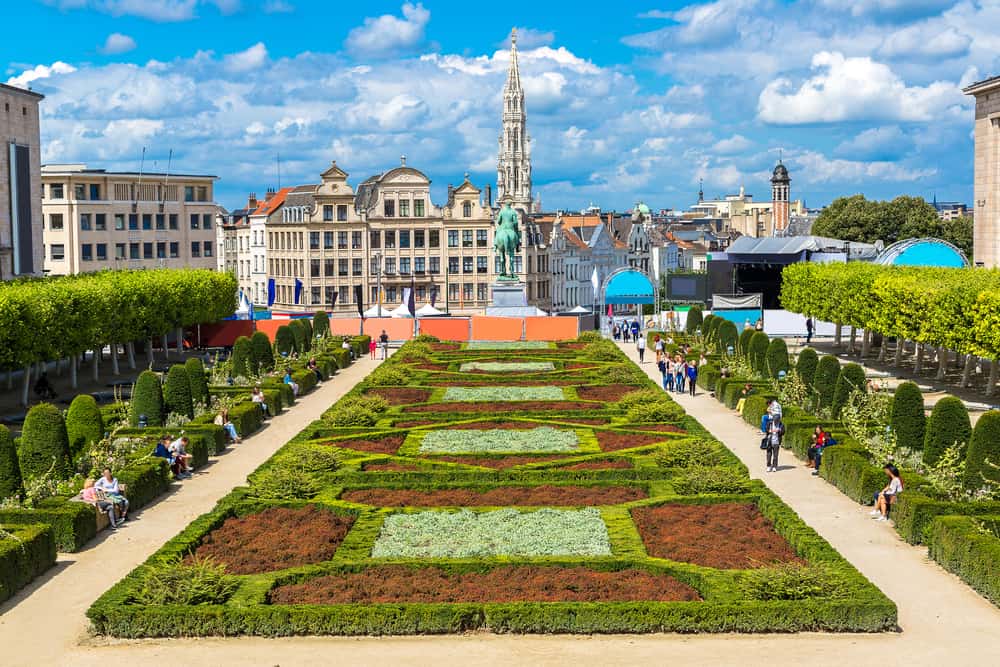
From the very top, you get views towards the Grand-Place with the city hall tower on the skyline and a statute of Albert I on horseback.
The Mont des Arts also includes a shopping and office gallery and a congress centre, notable for its glass cube.
The Royal Museums of Fine Arts of Belgium
The Royal Museums’ superb collection of 20,000 works of fine arts spans the period from the 15th to 21st centuries and traces the history of the visual arts – paintings, sculptures and drawings.
Among those whose work is covered are Pieter Bruegel, Peter Paul Rubens, Paul Gauguin, Ferdinand Khnopff, Rene Margritte, and Paul Delvaux, among others.
The Royal Museums of Fine Arts of Belgium consists of a series of first-class museums, including the Musee Magritte Museum. There is also the Musee Old Masters Museum, the Musee Modern Museum, the Musee Meunier Museum, and the Musee Wiertz Museum.
Royal Palace of Brussels
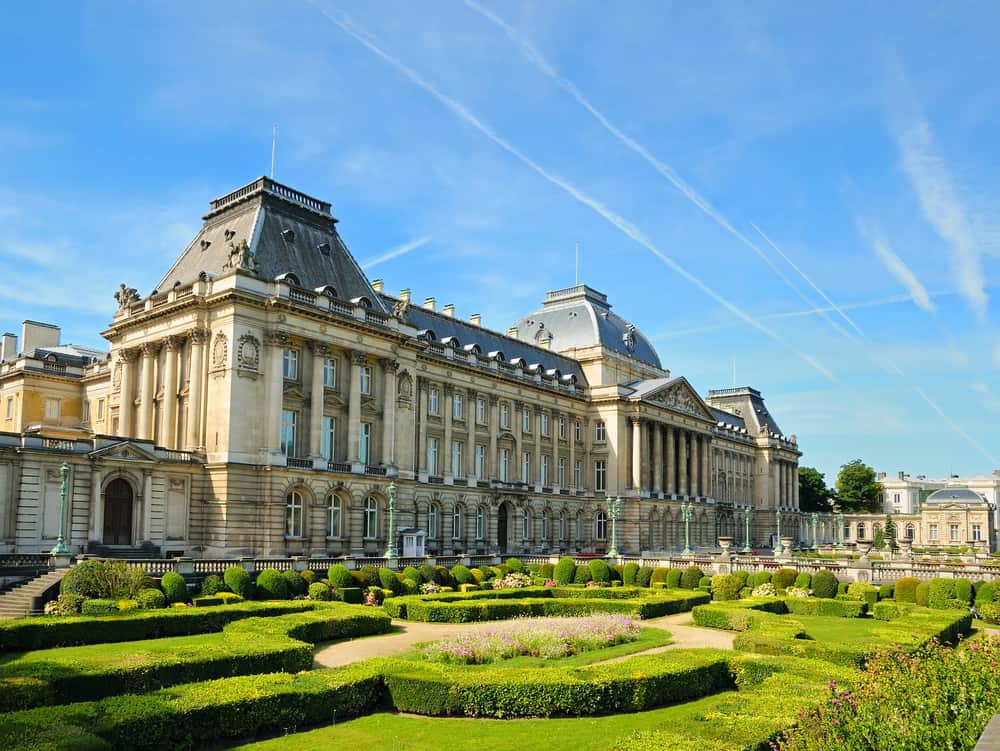
The majestic Royal Palace of Brussels – a symbol of the Belgian monarchy – stands at the opposite end of Brussels Park from Belgium’s Federal Parliament. It is here that the Belgian King carries out his administrative functions and receives guests.
The building also houses several other royal functions as well as apartments that are used by Heads of State during official visits to Brussels. The opulent rooms are open for tours between July and the start of September.
Parc du Cinquantenaire
Constructed in the late 19th century, the Parc du Cinquantenaire combines French-style gardens with a number of monuments, sculptures, and museums.
The main showpiece is the striking triumphal arch and its three arcades.

At the top, you get some of the best views over Brussels. Close by you can visit the Victor Horta-designed Pavilion of Human Passions, the Royal Museum of the Army and Military History, the Art and History Museum, and Autoworld, a museum dedicated to automobiles.
How to get to Brussels
Flying to Brussels
If you’re coming from London, Brussels is easy to get to from several London airports. Flights are only around an hour, so it would be easy to fly in, spend a day in the city and then move on to other destinations.
There are also direct flights to Brussels from other European countries. These include France, Italy, Germany, Spain, Poland, Sweden and Hungary. You can also catch indirect flights from the USA to Brussels.
Brussels airport is around 11 kilometres from the city centre, so it’s an easy journey to the main sights.
This website outlines how you can travel from the airport to the city.
Trains to Brussels
If you’re on a London to Brussels day trip and want to make the most of your time in the Belgian capital, taking the Eurostar train from London St Pancras station to Brussels Gare du Midi (Brussels South) is probably your best option.
Taking the train saves you travelling time to and from the airports at both ends. It also has the advantage of taking you from close to central London to the very heart of Brussels. You get to travel through the Channel Tunnel under the English Channel and admire the countryside on the way.
So if you catch an early train from London and a late train back, it really is possible to day trip from London to Brussels and get a full day out. You will just need to make sure you prioritise what you want to see.
There usually are around seven or eight direct trains each day from London St Pancras to Brussels Midi/Zuid station, with the first train departing around 6 am or 7 am. The travel time is around two hours.
If you book in advance, standard class train tickets can be reasonably priced, but prices will vary, so check in advance.
You could also go on a day trip to Brussels from other European cities. Fast train journeys from Paris and Amsterdam are less than an hour and a half and around two hours, respectively. Cologne in Germany is between two and three hours’ away.
If you’re already staying in Belgium, it’s easy to reach Brussels from places such as Antwerp and Bruges (around an hour away each).
One day in Brussels
I hope this post helps you to plan your Brussels day trip and gives you some ideas of what you can put on your Brussels day itinerary.
If you enjoy days out and short trips in Europe, you might be interested in my recent posts which include what to do on a weekend in Bruges and the best things to see in Mechelen in Belgium – both are easy to reach from Brussels.
I’ve also written about the top things to see in one day in Rotterdam in the Netherlands, an itinerary for one day in Geneva and another for a day in Berlin.
For other ideas for short breaks in places that include France, Italy, Germany, Portugal, Spain and the UK, see my website.


